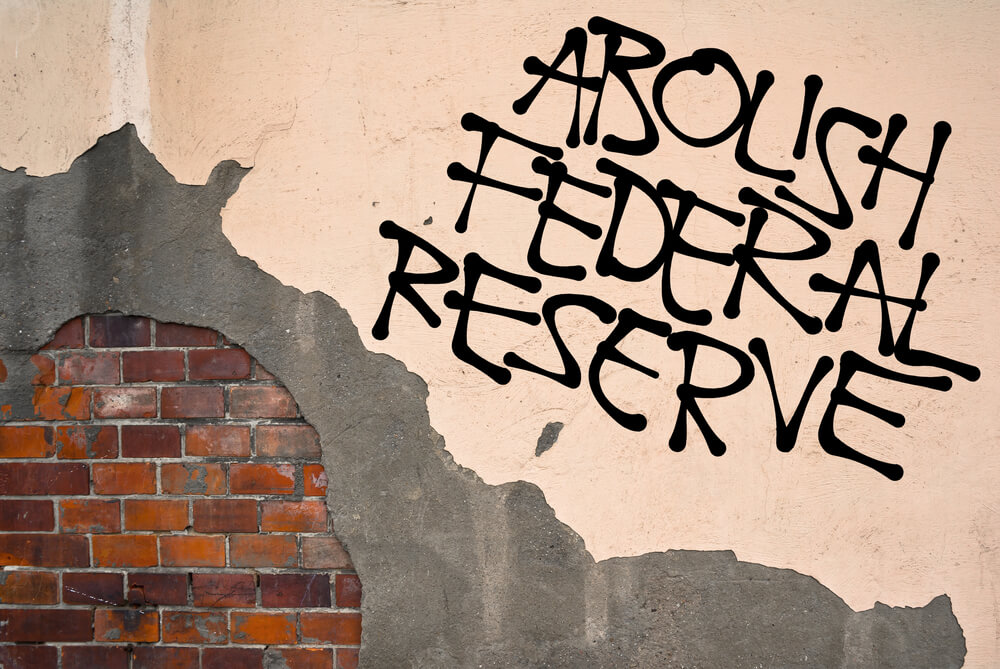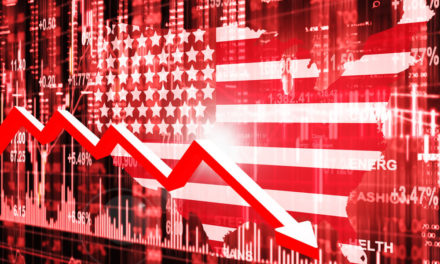In President Donald Trump’s upcoming State of the Union Address, he should set his sights on a topic that could receive bipartisan support: reforming the Federal Reserve.
A bill to reform the Fed and look at alternative ways to conduct U.S. monetary policy passed in the U.S. House of Representatives in 2015, only to be shot down in the Senate. However, retired foreign services officer and American Thinker writer James Soriano makes his case for why Trump should push for renewed efforts, and with Democrats now in control of the House, it is a great opportunity for a bipartisan deal to establish a new monetary commission.
The 2015 bill envisioned a 12-member committee, six appointed by the Speaker of the House and six appointed by the pro tempore of the Senate, along with two non-voting members, one appointed by the secretary of the treasury, and another selected from among the Fed’s governors.
With Nancy Pelosi now speaker of the House, another run at reviving such a bill would put an equal number of Democrats and Republicans on the commission, an outcome that would not have been in the cards in 2015.
The study group would submit its findings to Congress, with recommendations for new legislation and for making non-legislative changes in the Fed’s operating practices.
One task would be to evaluate various monetary policy frameworks, such as targeting the rate of inflation, or price levels, or GDP growth. The draft text specifically singled out the gold standard as one of the monetary approaches to be examined.
Renewed interest in a gold standard is the subject of a PBS documentary, In Money We Trust?, now being aired on television stations around the country. Authors Steve Forbes and Elizabeth Ames take us on a 57-minute tour of the monetary history of the U.S., with stops along the way on the global history of money and gold. The documentary’s thesis is that an unstable currency is not merely a hindrance to economic advance; it underlies a general breakdown in trust in a nation’s institutions. Note the question mark in the documentary’s title.
Gold has historically been the preferred means for stabilizing a nation’s currency, and, as the documentary points out, there has been no close competitor. The 19th century was the era of the so-called classical gold standard, which, Forbes tells us, “was a period of one of the greatest booms in the history of human kind, because you had stable money.”
In addition to the classical model, another type of gold standard might be a “gold-price mechanism,” associated with the late Jude Wanniski and others. How it would work is summarized at American Thinker here and here.
A move to reintroduce gold in its monetary role would have many implications. Two of them bear mentioning. For one thing, a gold standard would get the Fed out of the businesses of setting interest rates and would substitute in its place a rule-based approach to monetary policy.
Today, we have a situation where every six weeks or so, the Federal Reserve’s Open Market Committee meets behind closed doors and, after poring over the latest economic reports, votes on a target range for short-term interest rates. A sub-industry of Fed-watchers has sprung up, speculating as to the Fed’s intentions. Thus, every six weeks or so, the scene on the floor of the New York Stock Exchange is the same: grown men stand with eyes fixed on overhead television screens looking for the news flash about the latest Fed decision, even as supplicants in ancient Greece stood before the temple of Apollo awaiting an utterance from the oracle. A gold standard would do away with the Fed’s obscurantist deliberations and its priestly care of interest rates.
Another implication is that other nations would emulate the U.S. and seek to define their own currencies in terms of gold. This would entail a move toward re-establishing a global regime of fixed exchange rates, replacing the floating exchange rate system now in place. If Countries A, B, and C all define their currencies in terms of a fixed amount to gold, then their cross-rates must be fixed against each other, because things equal to the same thing are equal to each other.
National currencies so defined would introduce a stabilized global unit of account, which in turn would usher in an explosion of international trade and investment. It seems strange today that voices that are often raised in defense of free trade, with its emphasis on outsourcing and supply chaining, are silent on the need for creating a mechanism to stabilize the fluctuations of national currencies. As economist George Gilder notes in the documentary, as much as $5 trillion a day moves around the world in the form of currency trading, capital that could be put to more productive use. A gold standard would wring such distortions out of the system, enabling prices to communicate the true value of goods and services around the world.
Monetary reform is not a grassroots issue. The average person is not seized with disputing the finer points of interest-rate targeting or interpreting inverted yield curves. An economist can tell us why inflation acts like an invisible tax on income, but while the average person may not be able to give the classroom explanation, he knows what it feels like when he works harder but is not able to get ahead, or when a dollar does not buy as much today as it did a short time ago. The public senses that something is not quite right with the value of money. Something needs to be fixed.
This is where President Trump comes in. The president has a flair for breaking with convention and for taking on the settled opinions of our governing elites. He should push for reforming the Fed and for discussing alternative ways to conduct monetary policy. He should put a gold standard on Washington’s agenda. It is in America’s interest that this conversation take place. A move toward a gold standard would open up a space where Democrat can meet Republican, and where an “America first” slant on the national interest coincides with a needed reform of the global economic order.




